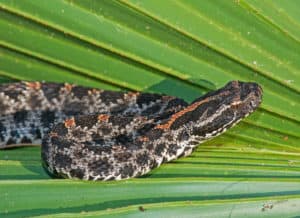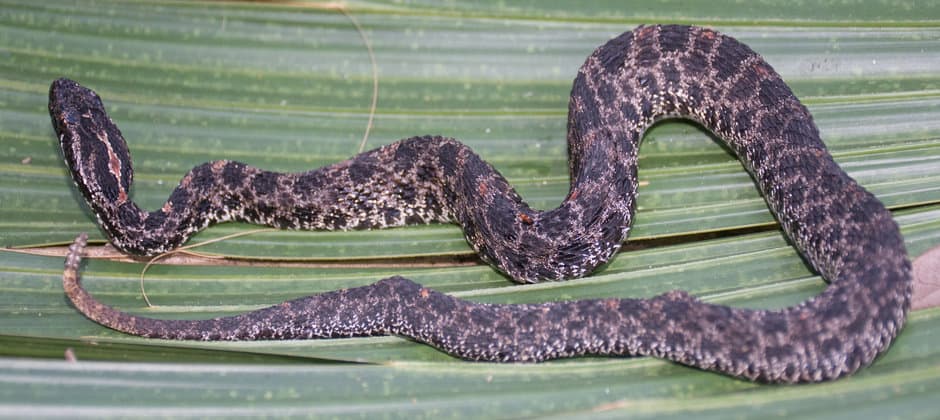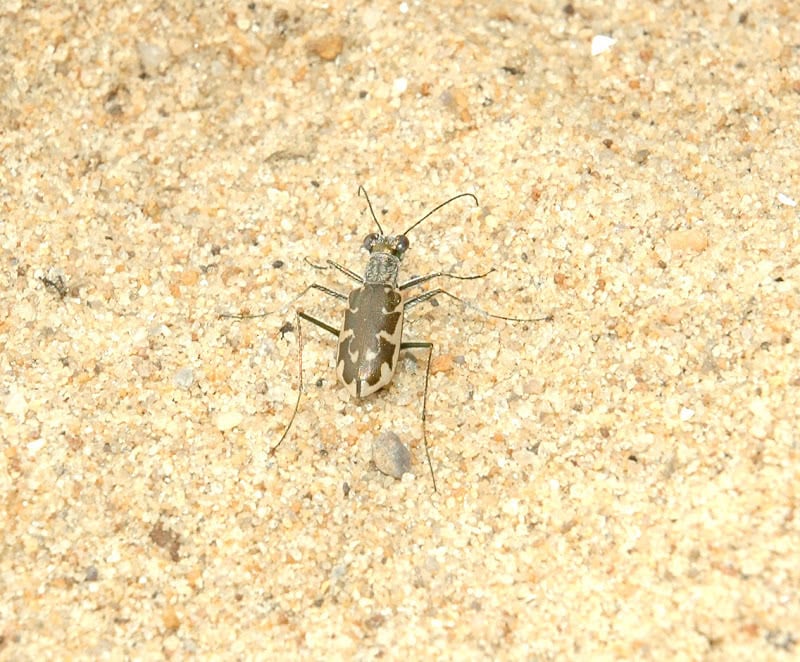Share this article
Fungal disease drains energy and dries snakes out
A pair of new studies illuminate one of the ways that a fungal disease may be killing snakes as well as what methods may not work for protecting infected serpents.
“This helps us understand why snake fungal disease is such a problem,” said Terence Farrell, a professor of biology at Stetson University in Florida and one of the authors of the two studies about snake fungal disease.
Snake fungal disease is a deadly infection that’s possibly related to a shell-eating fungus recently confirmed in turtles. In snakes, the fungus eats keratin, one of the chemicals important in scales.
In one of the recent studies, published in Functional Ecology, Joe Agugliaro from Fairleigh Dickinson University and his co-authors measured how much energy pygmy rattlesnakes (Sistrurus miliarius) with fungal disease were using compared to healthy snakes by using special chambers that help measure carbon dioxide production.
They found that snake fungal disease causes the snakes to use 30%-45% more energy. An increase in metabolic rates can result in drained energy for infected snakes and can increase total water loss through evaporation.
“It’s causing these animals to burn through their energy stores, which makes it even harder for them to mount a defense against the disease,” Farrell said.

A healthy pygmy rattlesnake. ©John Serrao
Craig Lind, a professor at Stockton University in New Jersey and co-author on the study, said that snakes in central Florida were turning up starving and emaciated. He speculates that the energy loss means the infected snakes spend less time foraging.
The team also found infected snakes were losing more water through evaporation compared to rattlesnakes without the fungus. Farrell said this is possibly related to the higher metabolic rates, which likely causes the snakes to exhale more moisture. But they also suggest lesions in the snakes’ skin from the fungus may also play a role in moisture loss.
While Farrell said this probably isn’t a problem with Florida pygmy rattlesnakes, which mostly live in wetland areas where water isn’t hard to come by, species of snakes in drier areas like New Mexico and California are also affected by snake fungal disease.
“Our study on the effect of SFD on metabolic rates helps us understand why the disease causes so many problems for infected snakes,” Farrell said. “We show that the physiological cost of fighting the disease is a huge energetic burden to the snakes.”
Some researchers thought supplemental feeding may help in cases where the fungus was causing starvation in species of special conservation concern. In another new study published in the Journal of Herpetology, Lind, Farrell and their colleagues experimented with supplemental feeding for pregnant female pygmy rattlers.
“What you might expect was that snakes getting more food when pregnant might fare better. We saw the opposite,” Farrell said. “Food supplementation ended up in very negative results for these pregnant females.”
Snakes that received supplemental feeding had significantly higher reproductive failure than those that didn’t, and this number was even more pronounced among pregnant females with snake fungal disease.
Conversely, pregnant snakes that the researchers didn’t feed had higher reproductive success and healthier offspring, with or without the disease.
The authors said eating and digesting prey takes significant energy and may divert energy from developing offspring.
While the females that were fed had better body conditions after giving birth, those snakes also showed more snake fungal disease symptoms than infected snakes that weren’t fed by the researchers.
“Fungal disease has multiple ways to impact reproduction, and all of them are negative,” Farrell said, adding that prior research showed that the disease can reduce the likelihood that they will even reproduce in the first place. “This study indicates SFD can cause reproductive failure in the snakes that do manage to become pregnant.”
Farrell and his colleagues still have hope for the snakes. In a study he and Lind were involved with in 2018, they found that snakes don’t always die from the disease.
“Infected snakes in the wild do sometimes show a full recovery from a nasty infection,” he said.
The question is just figuring out how those individuals recover.
Header Image: A pygmy rattlesnake infected with snake fungal disease, apparent from the reddish, raised lesions on the reptile’s back half.©John Serrao








